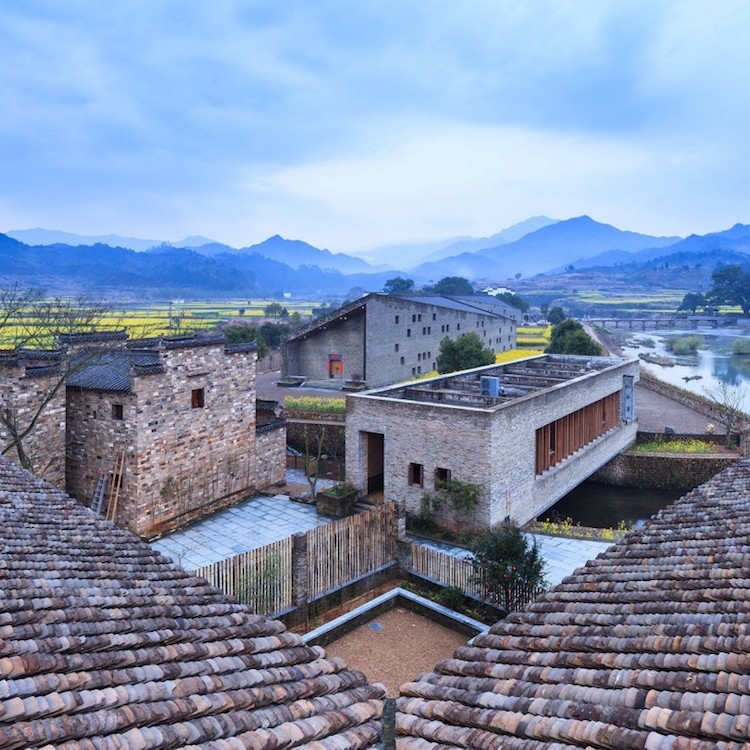ZHONGPING, China — Imagine Architects’ stunning brick Tea Seed Oil Plant (2014) seamlessly incorporates the area’s terrain and natural features. Nestled along a river valley, the architects sought to not only commemorate the curvature of the river’s path and the silhouette of the jagged mountains with their design, but also to minimize the its imposing impact.
The building should make a positive response to the natural environment and historical humanity environment where it is located.
In addition to the outside integrity of the design, the plant faced a limitation in the design’s interior in respect to the linear oil production process. Rather than building a long traditional industrial building, the architects utilized a ‘Z’ shape paralleling the nearby river path, while keeping in mind the structure’s occupation.
ArchDaily writes, the building is made primarily from old brick, old tile and old door sheet. The architects used brick in three major ways: self-supporting, space-retaining and insulation. Throughout both the interior and exterior, the brick is left exposed retaining the historical traces of time providing spectacular detail to the entire building.
Building cornices are beveled. The cornices ceiling is using the same method with the building walls. And the end of cornices which we called “pixel cornice.” is using jaggedback channel processing. It presents an alternative visual effect to the public.
The architects tell ArchDaily, using old materials didn’t save any costs, “but it is worth to do it after thinking about the ecological and the comprehensive social value.”
Tea-seed oil is acquired through cooperation with nearby villages thus perpetuating a cyclical relationship, the architects told ArchDaily.
As an eco-poverty assistance projects, the plant is using an “order + farmer” mode; the materials of tea-seed oil factory comes from several villages around mountains which are not far away from the factory. By doing this, we are not only helping these villages out of poverty but also creating a circular economy around these mountains.
Images by Zeng Jianghe.
Do you love or loathe this work of contemporary ceramic brick architecture? Let us know in the comments.












Really beautiful, and somewhat surprised to see it in what I assume is rural China!
One of the most beautiful plant.
I love that the feel is so traditional and contemporary at the same time–old materials, old lines, new sleekness and beautiful compatibility with its place.